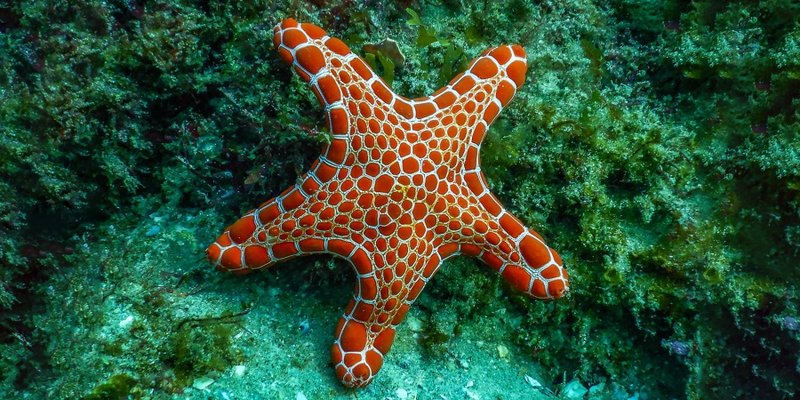
Imagine if one day your favorite beach lost all its starfish. It might feel like losing a part of its soul. Sadly, that’s a reality in some places due to climate change, pollution, and other human activities. If you’re wondering whether starfish are endangered and what’s being done to protect them, let’s dive in and explore!
What’s Happening to Starfish Populations?
Starfish populations have been declining for several years. They play a vital role in marine ecosystems by helping control the population of other species, like mollusks. When their numbers drop, it creates a ripple effect through the food chain, impacting many marine animals.
One of the primary reasons starfish are struggling is ocean warming. As global temperatures rise, sea temperatures do too. Starfish are quite sensitive to temperature changes and can suffer from a condition known as sea star wasting syndrome. This disease causes them to disintegrate and die, leaving large numbers of starfish dead along coastlines.
Additionally, pollution adds another layer of stress. Chemicals and waste entering the oceans can disrupt their habitat and lead to poor health. When starfish are already vulnerable to environmental stressors, added pollution can make recovery nearly impossible.
The Impact of Climate Change on Starfish
You might be wondering how climate change directly affects starfish. Well, it’s all about the interconnectedness of the ocean. As temperatures rise, the habitats where starfish thrive, like coral reefs, face bleaching and degradation. This means less food and fewer places to live for our spiny friends.
Another issue is ocean acidification. The more carbon dioxide we release into the atmosphere, the more gets absorbed by the oceans, leading to acidic waters. This change makes it harder for starfish to build their skeletons, which can stunt their growth and affect reproduction.
The combination of these factors results in a significant decline in starfish numbers. Ecosystems that were once bustling with life are beginning to showcase empty spaces where these creatures once thrived.
Recent Conservation Efforts to Protect Starfish
Luckily, there’s hope on the horizon! Conservationists around the globe are stepping in to help protect starfish populations. Many organizations are focusing on habitat restoration. This involves cleaning up polluted areas and working to restore coral reefs, giving starfish better conditions to thrive.
Additionally, researchers are studying different species of starfish to understand their specific needs. This information helps create targeted strategies for conservation efforts. For example, some areas are implementing marine protected zones where activities that harm marine life are limited, giving starfish a safe haven to grow and reproduce.
Education is another critical component. Awareness campaigns help locals understand the importance of starfish to the ecosystem. The more people know, the more they can contribute to protecting these incredible creatures.
How Starfish Affect Marine Ecosystems
Starfish are not just beautiful; they serve essential functions in their ecosystems. By preying on certain species, they help maintain balance in marine environments. For instance, the sunflower sea star is known to eat urchins, which if left unchecked, can decimate kelp forests. Without starfish, whole ecosystems can collapse.
Think of starfish as nature’s gardeners. They help ensure that the ocean remains healthy and diverse. When you see a starfish, you’re looking at an indicator of ocean health. Protecting them means protecting the entire marine ecosystem.
The decline of starfish can lead to overpopulation of other marine species, which can cause food shortages for different animals. This imbalance ultimately affects everything from the tiniest plankton to larger predators like seals and sea otters.
What You Can Do to Help Starfish
Feeling inspired? There are several ways you can contribute to the conservation of starfish and their habitats.
- Reduce Pollution: Use less plastic and properly dispose of waste to keep it out of the oceans.
- Support Conservation Organizations: Donations to marine conservation groups can help fund research and habitat restoration projects.
- Spread the Word: Educate friends and family about the importance of starfish in marine ecosystems.
- Participate in Beach Clean-Ups: Join local clean-up efforts to help keep beaches and oceans clean, giving starfish a healthier environment.
Whether it’s through activism, education, or being mindful of your environmental impact, every little bit helps!
Looking Ahead: The Future of Starfish
As we look toward the future, the key to saving starfish lies in understanding and action. Climate change is moving at a rapid pace, but with dedicated efforts, we can make a difference. Scientists continue to monitor starfish populations to better predict their responses to environmental changes, developing proactive measures to shield them from threats.
While the situation is serious, the growing awareness and conservation initiatives show that we’re standing up for these extraordinary beings. Every effort counts, and together we can help ensure that starfish continue to grace our oceans for generations to come.
In conclusion, starfish might not be the first animal that comes to mind when we think about endangered species, but they certainly deserve our attention and care. Their plight is a reminder of how interconnected our world is and the importance of protecting our natural habitats. Let’s make an effort to keep these stunning creatures part of our marine landscapes.
